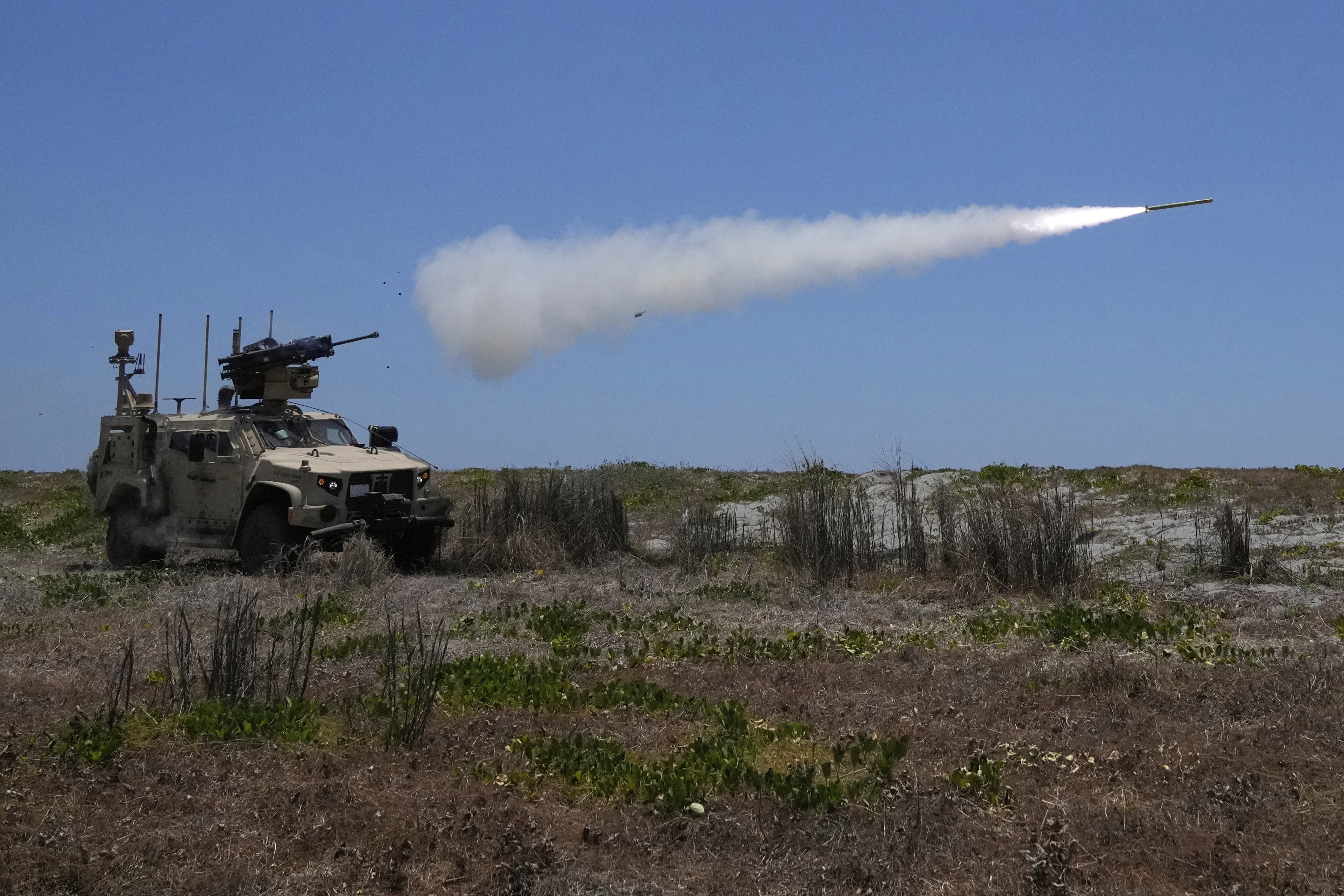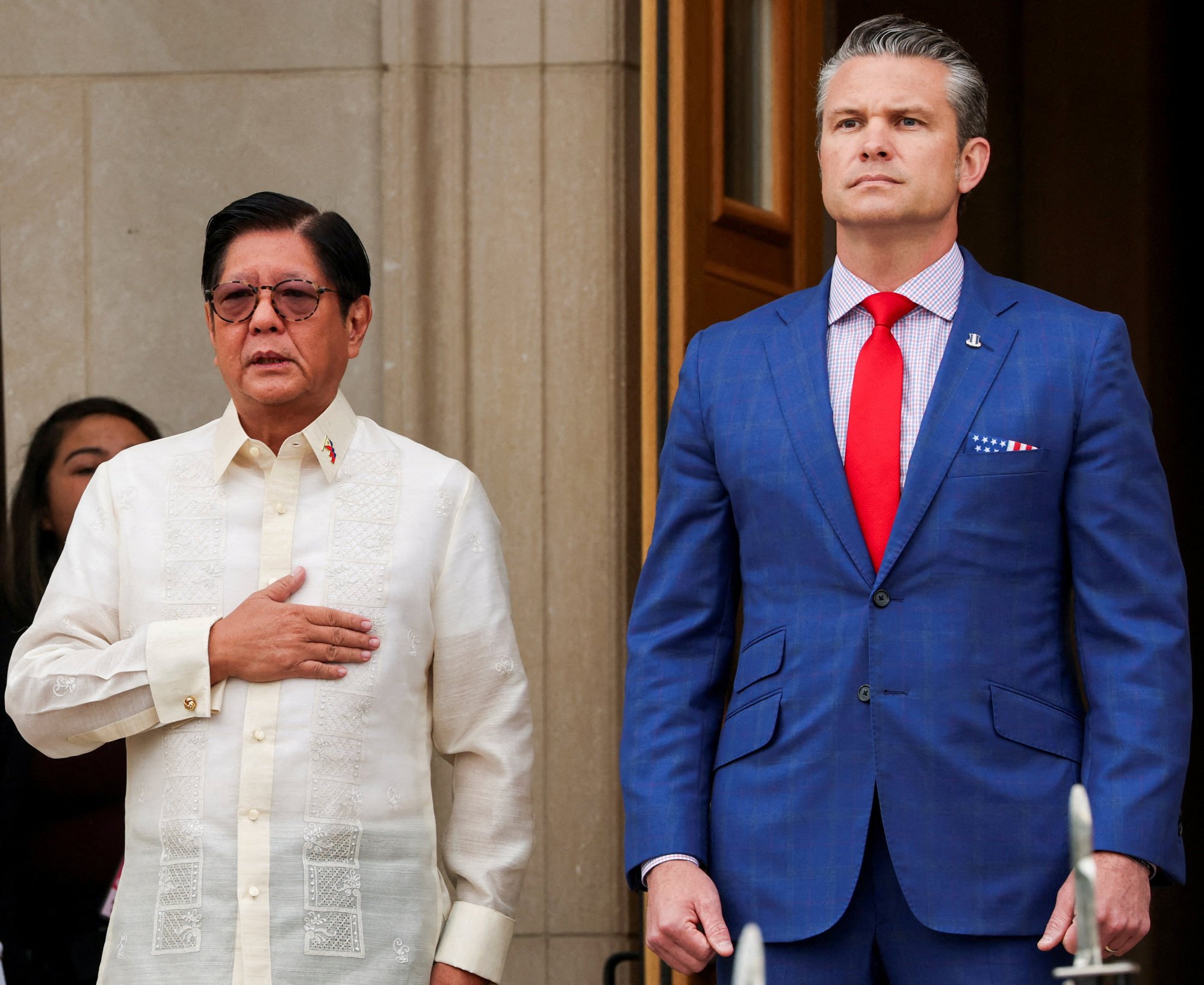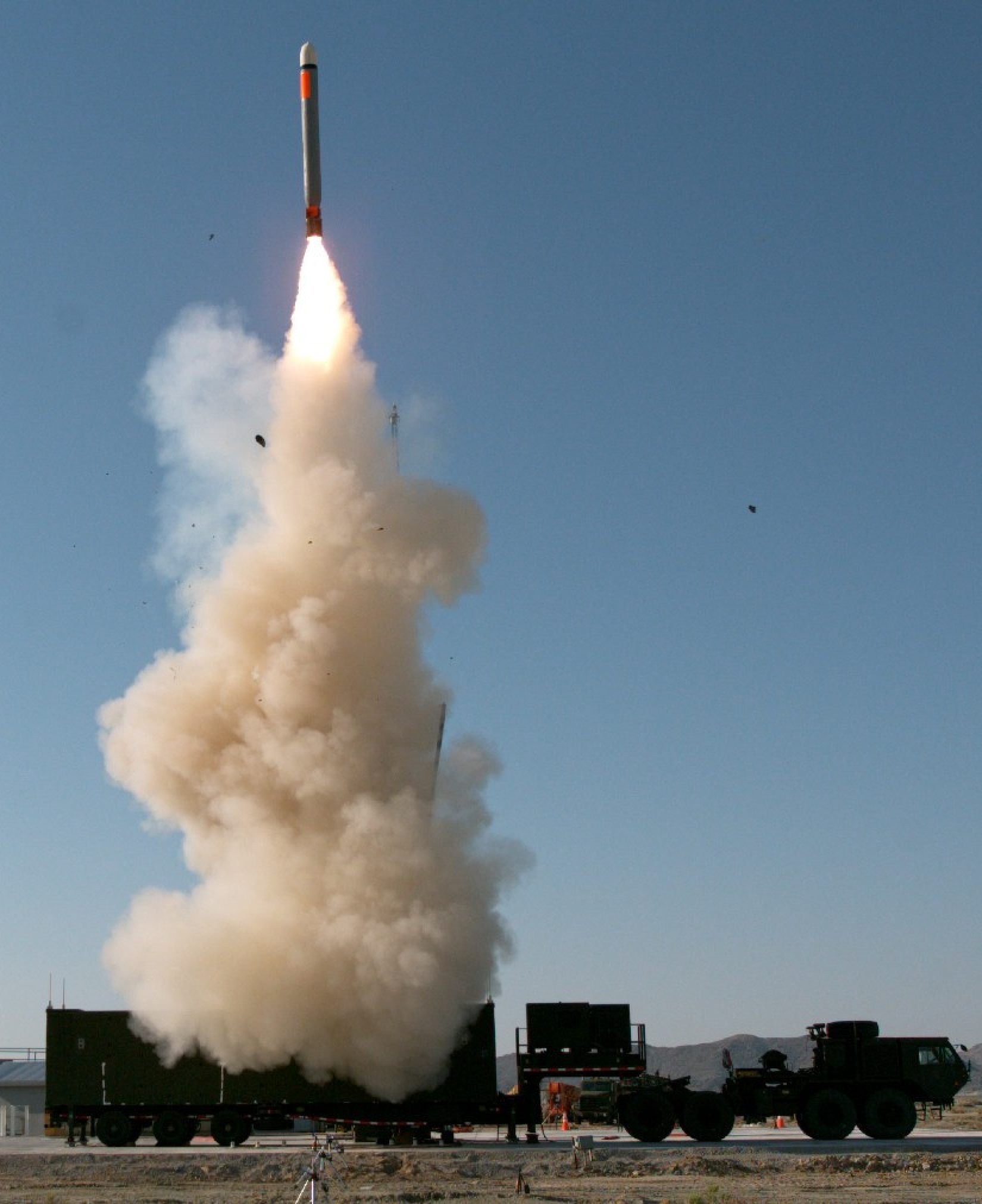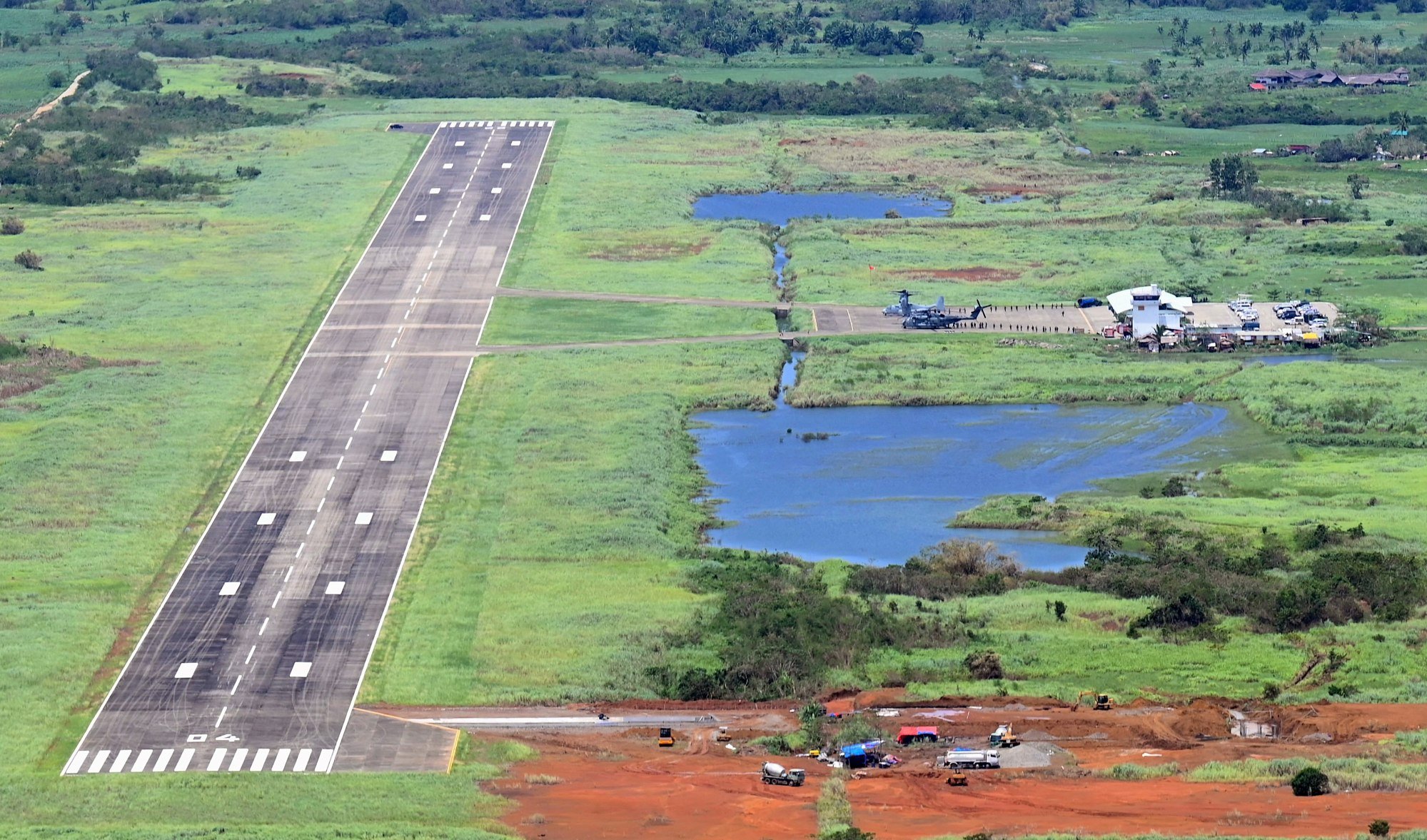Will more US missiles in Philippines deter or provoke South China Sea conflict?
With the placement of missile and drone systems, analysts debate if the Philippines will become a forward-operating platform or a flashpoint

The South China Sea is about to become more militarised as the United States commits to deploying cutting-edge missile and drone systems in the Philippines.
US Defence Secretary Pete Hegseth confirmed the move during high-level talks with Philippine President Ferdinand Marcos Jnr on Monday US time, signalling Washington’s push to create a “strong shield of real deterrence” against growing Chinese influence and prepare for potential crisis scenarios.
The new weapons would form part of a broader strategic effort to reinforce Manila’s role in regional security, Hegseth said at a meeting with Marcos at the Pentagon, ahead of the Philippine leader’s meeting with President Donald Trump at the White House.
“We’re deploying new cutting-edge missiles and unmanned systems, and revitalising our defence industrial bases. Together, we must forge a strong shield of real deterrence for peace, ensuring the long-term security and prosperity for our nations,” Hegseth told Marcos.
While the Pentagon did not specify which missile or drone platforms were involved, Hegseth stressed the moves were not intended to provoke confrontation. “But we are and will be ready and resolute. We’re proud to support our mutual economic vitality, including your efforts to modernise your armed forces and collective defence.”

Hegseth also reaffirmed US commitment to its decades-old pact with Manila. The 1951 Mutual Defence Treaty, he said, covered attacks on “our armed forces, aircraft or public vessels, including our coastguards, anywhere in the Pacific, including the South China Sea”.
In response, Marcos emphasised the vital role of the alliance in keeping the peace amid rising geopolitical tensions. “I believe that our alliance, the United States and the Philippines, has formed a great part in preserving peace, in terms of preserving the stability of the South China Sea … I would even go as far as to say in the entire Indo-Pacific region,” he said.
Security analysts believe the unspecified “cutting-edge” systems could include the Terminal High Altitude Area Defence system, a US-built platform capable of intercepting ballistic missiles at ranges up to 200km (124 miles) and altitudes of 150km (93 miles). Beijing has strongly opposed its deployment in other countries, citing its radar capabilities as a threat to China’s strategic deterrent.
“The deployment of various missile systems could signal the Americans, along with the Philippines, are preparing for any eventuality regarding Taiwan,” Abdul Rahman Yaacob, a research fellow with the Lowy Institute’s Southeast Asia Programme, told This Week in Asia.
Manila’s defence planners were concerned that the Chinese military might occupy Philippine islands in the Luzon Strait in the event of a conflict in the Taiwan Strait, he said.
Taiwan is home to around 150,000 Filipino migrant workers, many of whom are employed as domestic helpers or factory workers.
Beijing sees Taiwan as part of China to be reunited by force if necessary. While the US does not recognise Taiwan as an independent state, it is opposed to any attempt to take the self-governed island by force and is committed to supplying it with weapons.
Sarang Shidore, director of the Global South Programme at the Quincy Institute, a Washington-based think tank, said that since last year, the US had been deploying more advanced armaments to the Philippines in the belief that these could deter Chinese intrusions into the South China Sea.
From the US perspective, Shidore said, such deterrence would reduce the chances of a major war by limiting Chinese maritime assertiveness. “There’s also a second, less visible, dimension to these deployments – which is their utility in case of a conflict over Taiwan,” he told This Week in Asia.

Last year, the US Army deployed a Typhon launcher in Northern Luzon in the Philippines as part of a joint training exercise. The land-based, ground-launched system is capable of firing the Standard Missile 6 and the Tomahawk Land Attack Missile, whose ranges of more than 240km (150 miles) and 2,500km (1,550 miles), respectively, put the South China Sea and the Taiwan Strait within its radius.
Unhandled type: inline-plus-widget {“type”:”inline-plus-widget”}
In April, the US also deployed their Navy-Marine Expeditionary Ship Interdiction System (NMESIS) missile system in Batanes, a small province at the northernmost tip of the Philippines facing Taiwan. The NMESIS fires the Naval Strike Missile, a precision-guided, sea-skimming missile with advanced target discrimination and a range of around 185km (115 miles).
Attention shift
While these deployments have focused on northern areas, experts say Washington could eventually expand its footprint to western and southern regions of the archipelago.
“In the future, Palawan or even Zamboanga [in Mindanao] might be considered, especially if attention shifts towards the Spratly Islands or the broader maritime domain of Southeast Asia,” said Arnaud Leveau, an assistant professor of geopolitics at Paris Dauphine University.
“However, such moves would probably face greater political sensitivity within the Philippines. Current deployments strike a balance between operational relevance and diplomatic caution.”
Sylwia Monika Gorska, a political analyst with a doctorate in international relations from the University of Central Lancashire, agreed. She noted that while future deployments might expand to other Enhanced Defence Cooperation Agreement (EDCA) sites, positioning forces in northeastern Luzon’s Cagayan and Isabela would boost layered coverage of the Luzon and Bashi Channels – key routes in any Taiwan-related contingency – and provide strike redundancy across the north.
In 2023, Manila gave the US access to four new military sites, on top of an existing five under the EDCA, which allows Washington to rotate troops and preposition defence material, equipment and supplies in specific locations in the country.
One of them, Palawan, an island facing the South China Sea, offered direct access to contested maritime space, extending the reach of maritime interdiction without requiring a permanent basing footprint, Gorska said.

“This forward dispersal reflects a broader US strategy already seen in southern Japan and northern Australia – deploying mobile systems across multiple sites to increase operational resilience, complicate adversary targeting, and ensure sustained strike capability even under pressure,” she explained.
“Yet the Philippine case remains distinct: it hosts without owning, shaping deterrence posture while remaining outside the decision loop. Strategically, this amplifies Manila’s visibility in crisis scenarios – embedding it in the architecture of escalation, even as its political agency over those deployments remains limited.”
China claims nearly the entire South China Sea, including areas also claimed by the Philippines, Brunei, Malaysia and Vietnam. An international tribunal dismissed China’s claims in 2016, declaring them without legal basis – a verdict that Beijing has consistently rejected.
Observers say the US move to expand its military footprint in the Philippines reflects a shift towards “distributed deterrence” – dispersing forces and weapons across multiple locations to complicate Chinese strategic planning.
“With the revival of the EDCA, the Philippines is no longer seen merely as a logistical partner but as a forward-operating platform for deterrence,” Leveau said. “It is a form of calibrated entrenchment demonstrating long-term commitment that avoids provocations that could be associated with permanent bases.”
Gorska said Washington was “rehearsing escalation scenarios in advance”, aligning geography, logistics and legal frameworks to allow rapid response.
She described the Marcos government’s expanded cooperation under EDCA as enabling “scalable deterrence” – a flexible posture that maximised military presence without triggering domestic backlash or requiring treaty revisions.
But not all experts believe the strategy is foolproof.
“Relying on a deterrence-heavy or deterrence-only strategy can easily provoke more than defend,” Shidore said. “Pulling the Philippines into a Taiwan scenario can be risky, as there is a mismatch of core interests between Washington and Manila on Taiwan.”